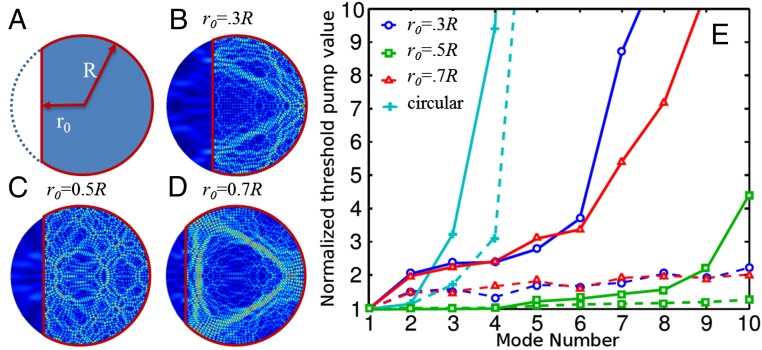Fig. 1.
Design and simulation of D-cavity lasers to optimize multimode lasing. (A) A schematic of the D-shaped cavity that consists of a circle with a flat edge at a distance r0 from the center. (B–D) Numerically calculated (false color) amplitude of the electric field distribution for the highest Q mode in cavities of radius R = 5 μm and r0 = 0.3R, 0.5R, and 0.7R, respectively. The modes have transverse-magnetic (TM) polarization with the electric field perpendicular to the cavity plane. The mode in the cavity of r0 = 0.5R displays the most uniform spatial intensity distribution. (E) Calculated pump thresholds of the first 10 lasing modes in four cavities of r0 = R (circle), 0.7R, 0.5R, and 0.3R, normalized to the threshold of the first lasing mode. Dashed lines show noninteracting thresholds reflecting the Q-value distribution of the passive cavity. The r0 = 0.5R cavity has the narrowest distribution of Q values, which is favorable for multimode lasing at relatively low pump values. Solid lines show interacting thresholds, calculated from SALT up to the fifth lasing threshold and extrapolated using the single-pole approximation (SPA)-SALT approximation (17) up to the 10th lasing threshold. Mode competition causes the actual thresholds to increase compared with the noninteracting estimates, but has the weakest effect for the r0 = 0.5R cavity shape (due to reduced localization of the lasing modes as discussed in the text). Hence the r0 = 0.5R cavity is optimal for maximizing the number of lasing modes.

